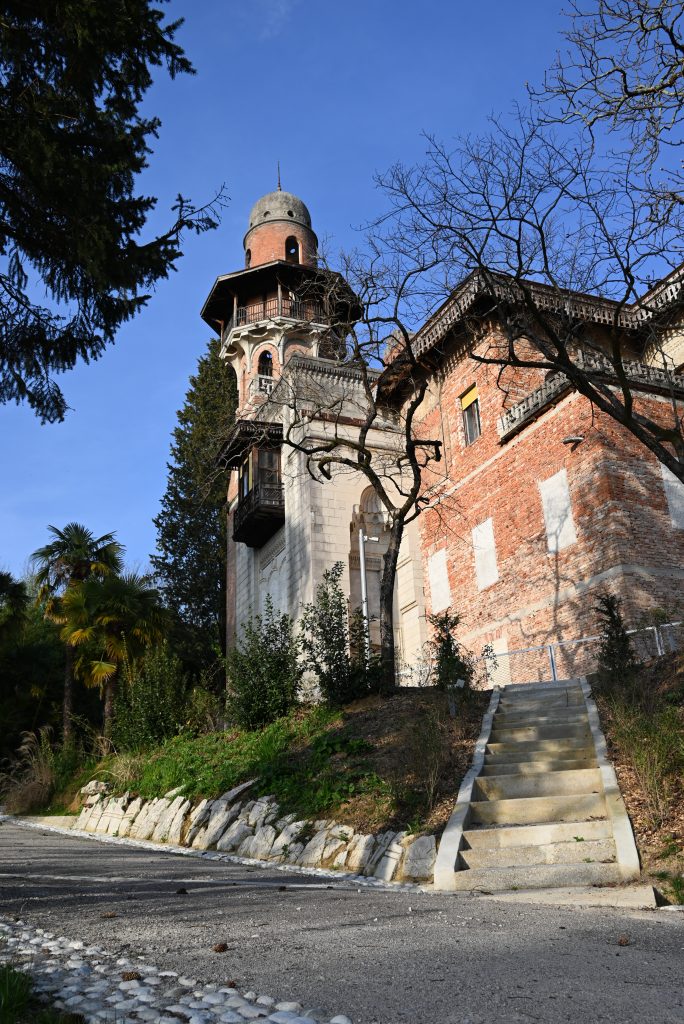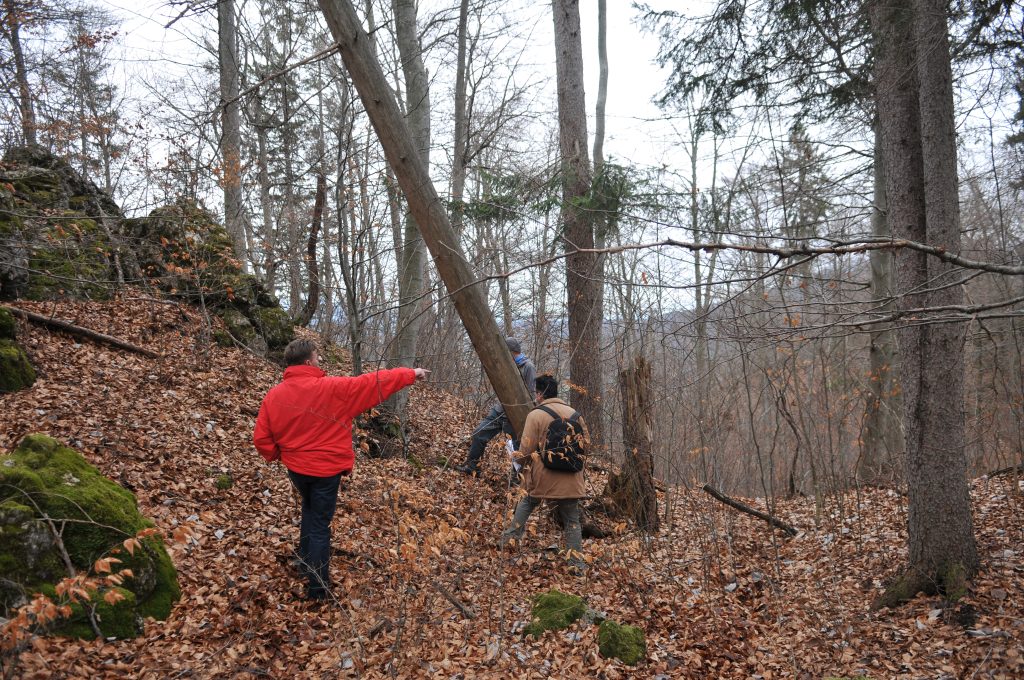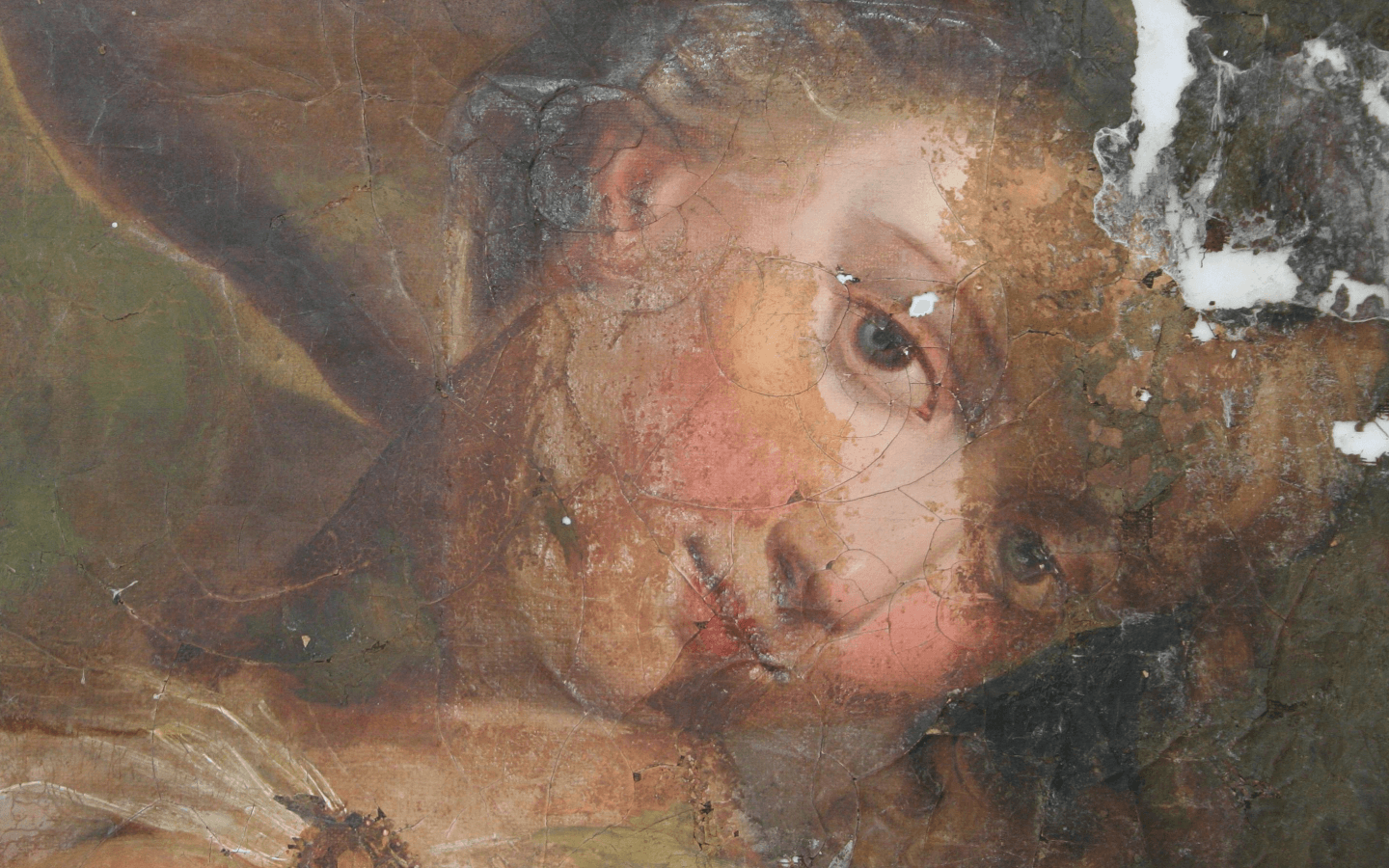After the procedure, the difference between the two altars is less disturbing.
Text. Vlado Fras ZVKDS Restoration Centre


In 1631, on the orders of Bishop Visitator Rinaldo Scarlicchi, the two Gothic side altars were removed and four years later a new right altar and 50 years later a new left altar were built in the Church of St John the Baptist in Bohinj.
In 2022, the right altar of the Beheading of John the Baptist was dismantled and brought to the workshop of the ZVKDS Restoration Centre. The reason for the intervention was its complete intactness in a small group of subalpine pre-baroque Mannerist-Renaissance altars, which is extremely rare, and it had to be conserved. On the opposite wall, the left altar was restored in 2016 without the knowledge of the profession, the Institute. The illumination of the problem has revealed a discrepancy in the different presentation of the two altars, which is not in line with the profession's concern for the church, which, with its contents, occupies a high place among sacred monuments. Prior to the intervention, it was evident from the inspection that the left altar of St Elizabeth had been restored without the cultural protection guidelines and supervision of the ZVKDS OE Kranj. The appropriate documentation was not provided when the contractor was contacted. The planned restoration would bring the right altar closer to the right altar in terms of a correct overall presentation of the entire furnishings and paintings of the church, which is the main guideline of the interventions in the Baptist Church, including its exterior.
The research was carried out in the area of the technology of the painted table altarpiece, provenance and past art-historical treatment. The surprise of the research was the facial image on the right side cartouche of the pedestal on the compartment. Otherwise invisible to the naked eye, it appeared when illuminated with UV light. Apparently the former painted image had left enough substance in the wood for the UV image to show the facial image, which remains a mystery. Certainly the mannerist way in which the head is painted corresponds to the hand that painted the Beheading on the wooden panel. The entire right side of the altarpiece is unfinished and without a side wing, as it was originally placed on the brick nave with the right side in the wall corner. The same applies to the left altar on the left side of the nave.
This unique example of an intact altarpiece with an altar painting of the Beheading of John the Baptist in the classical egg tempera technique was in good condition, considering its date of 1635. Despite damage, wear and tear and missing small pieces of ornamentation, the whole was aesthetically harmonious. The logical guideline was to carry out the intervention only by removing the impurities and conserving the whole. The tableau, painted according to a graphic template by Jan Sadeler (copper engraving of 1580 after Marten de Vos), was treated with the technique of removing the impurities with water-based isooctane gels and then surface-protected.
Despite the temporal and aesthetic similarities between the two altars, they differ greatly in the detail and expressiveness of the architectural and ornamental elements. The right altar is older by about 50 years, as Jadranka Fürst explains in her "Iconography of the altar paintings in Ribčev laz".
The interventions on both altars were successfully carried out, given that the investigations on the left altar revealed that it had been restored for the first time in the 1960s by the then Monument Conservation Institute, as confirmed by a sticker on the interior of the rear part of the compartment. At that time, the altarpiece with the Visitation scene was underpainted with a newer canvas using the classical method and the painting was retouched, so we did not intervene with the current painting, despite the fact that in an illegitimate intervention in 2016, retouches were also carried out on the altarpiece. The decision was in line with the opinion of the experts of the Department of Stencil Painting. This was due to the difficulty of defining the layers of the first and second operations on the painting and the likelihood that removing the retouches of the last operation would cause damage to the retouches of the first operation.
Certain more recent retouchings of the last intervention on the ornamentation and polychromy have been removed, e.g.: on the images of the side pedestals on the pediment, the glossy varnish and coloured retouchings on the ornamentation with painted details on the silver, the white reflexes on the scene on the attic, the white borders on the ornamentation of the altar side surfaces, and the layers of glazed shades of umber that were applied as a patina. The fact that the altar was restored at the Institute in the last century offers a possible explanation that it was in poor condition due to its location next to the then problematic north wall.
After the procedure, the difference between the two altars is less disturbing. The fact that the left altar was restored in the last century obliges us to preserve the intervention of that time, which was carried out by the hand of our predecessors in a manner appropriate to the time and the circumstances, and thus to the history of the altar story. The compromise not to completely remove all the retouches on the left altar was in favour of preserving the previous century's retouches and the original polychromy underneath. The decision was based on the fact that the last illegal intervention did not contain an insulating layer that would have protected, conserved the pre-2016 state and allowed the removal of the problematic retouches.
The compromise not to completely remove all the retouches on the left altar was in favour of keeping the previous century retouches and the original polychromy underneath. The decision was based on the fact that the last illegal intervention did not contain an insulating layer that would have protected, conserved the pre-2016 state and allowed the removal of the problematic retouches.
Participants Petra Bešlagič, Sonja Fister, Rok Hafner, Katja Kavkler, Eva Lucija Krajnc, Andrej Hirci, Barbara Gosar Hirci, Expert group for wooden polychrome sculpture and altars ZVKDS, Robert Peskar, Vito Dolničar, Katarina Fras.
SOURCES:
Ksenija Rozman, The Beheading of St John the Baptist and the side altars in the Church of St John by Lake Bohinj, in: Zbornik za uměníno istorii (Nova vrsta), 30, 1994, pp. 43-48.
Blaženka First, Iconographic sources for the paintings on the side altars of the Church of St. John in Bohinj, in: Zbornik za uměníno istorii (Nova vrsta), 28, 1992, pp. 59-75.










